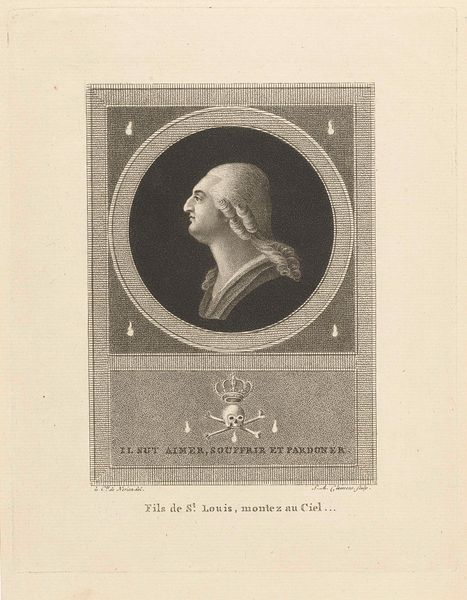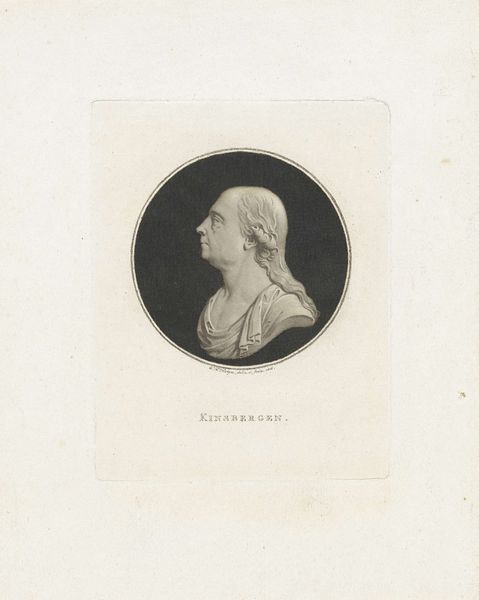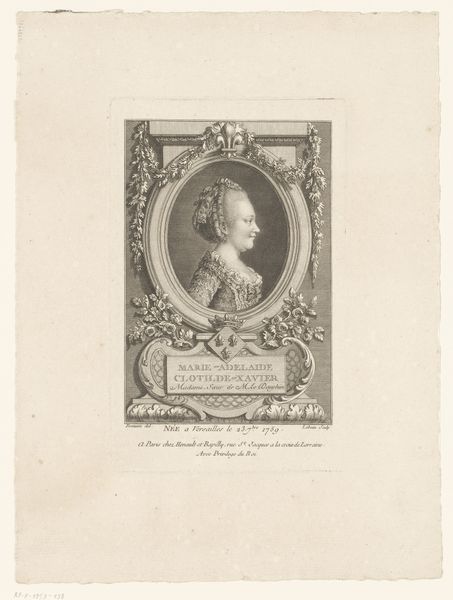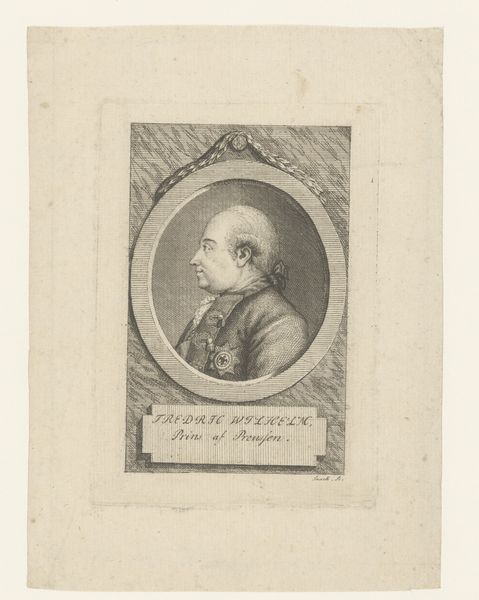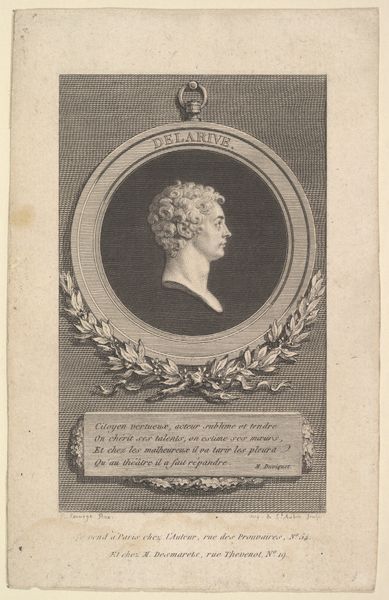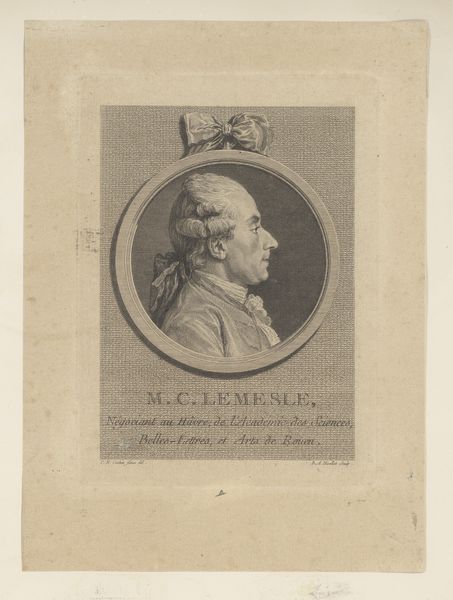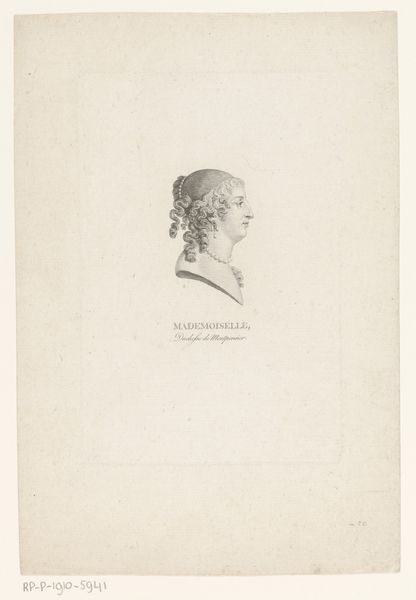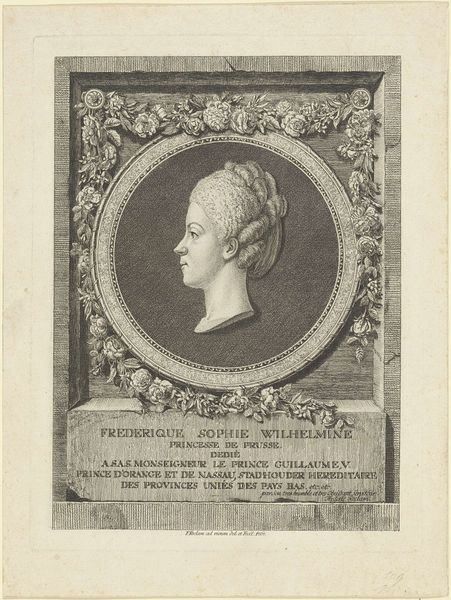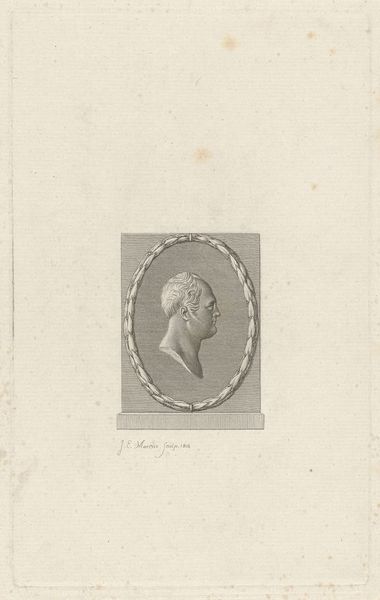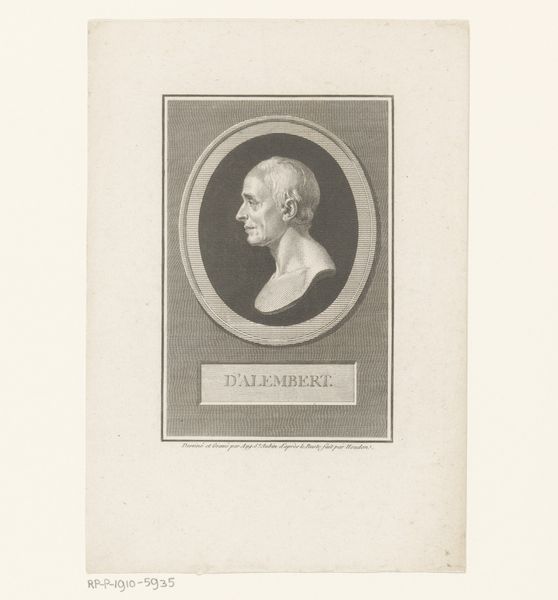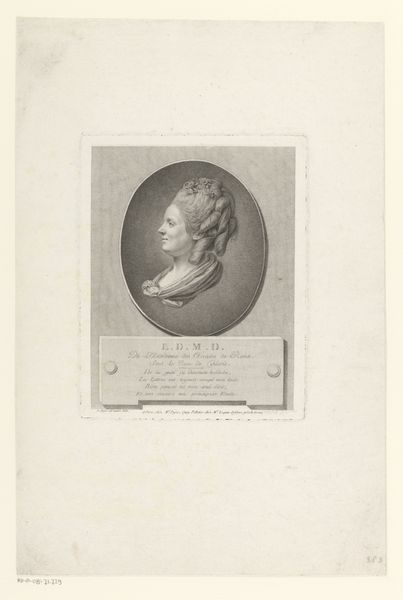
Portret van Élisabeth Philippine Marie Hélène de France after 1794
0:00
0:00
print, engraving
#
portrait
#
pencil drawn
#
neoclacissism
# print
#
pencil sketch
#
old engraving style
#
pencil drawing
#
line
#
history-painting
#
academic-art
#
engraving
Dimensions: height 190 mm, width 142 mm
Copyright: Rijks Museum: Open Domain
Curator: This delicate engraving, "Portret van Élisabeth Philippine Marie Hélène de France," comes to us from after 1794 and is attributed to Lambertus Antonius Claessens. Editor: There’s a quiet austerity to this image. The woman's profile, framed in that dark oval, almost feels like a cameo, a memento of a life abruptly ended. The tight lines and almost clinical detail evokes grief. Curator: Indeed. As a print, this image served as a readily disseminated piece of political and social commentary. Elisabeth, sister of Louis XVI, was executed during the French Revolution. Her image, circulating after her death, kept her memory alive. The inscription suggests sacrifice and piety in the face of revolutionary fervor, aligning her with royalist ideology. Editor: Absolutely. Look at the deliberate choices in portraying her. The sharp, clean lines emphasize her nobility. She is identified as "M Royale de France". Her coiffure is restrained, almost austere. There's no flamboyant display of wealth here. This conveys moral rectitude. Curator: Right. And let's consider the historical context. This portrait was created during a period of intense upheaval and propaganda. These memorial prints, affordable and easily reproduced, played a vital role in shaping public opinion and cultivating allegiance to the royalist cause even after their deaths. Editor: The prayer at the bottom "De mes Larmes au Ciel J'offre le Sacrifice" evokes her spiritual devotion, her willingness to bear suffering. This connects to centuries-old depictions of saints. She becomes an icon, a martyr figurehead for those who felt wronged by the revolution. The choice of iconography isn’t random; it carries incredible weight. Curator: The very act of creating and distributing such an image was, in itself, a political statement, demonstrating resilience against the revolutionary government's attempts to erase the monarchy from collective memory. It challenges the erasure of history that regimes often seek. Editor: So, on one level, this intimate portrait reveals both the fragility and endurance of symbols within turbulent historical landscapes. Curator: And highlights the power of printed images as a tool for shaping collective memory during moments of extreme social and political transformation.
Comments
No comments
Be the first to comment and join the conversation on the ultimate creative platform.

